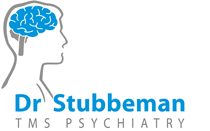
Could Transcranial Direct Current Stimulation Have Unexpected Additional Benefits in the Treatment of Depressed Patients?
Colleen K Loo, Donel M Martin | Expert Rev Neurother. 2012;12(7):751-753
Copyright © 2015 by WebMD LLC. All rights reserved.
Abstract and Introduction
Introduction
The application of novel brain stimulation techniques to treat depression, and possibly other neuropsychiatric disorders, is a new and rapidly growing field. Among these techniques, transcranial direct current stimulation (tDCS) is emerging as one of the most promising approaches because of its relative ease of use, safety and neurobiological effects. tDCS involves the use of weak electric currents (1–2 mA), passed through brain tissue via electrodes placed on the scalp. The stimulation is too weak to directly cause neuronal firing, but is thought to interact with the neuronal membrane and background neural activity, resulting in modification of synaptic strength.[1] When given tonically for a few minutes, it can induce lasting changes in neuronal excitability, as evidenced in physiological studies.[2] This is presumably the mechanism by which repeated stimulation sessions can lead to meaningful therapeutic effects, as seen in clinical trials.[3]
One of the most promising therapeutic applications of tDCS has been in the treatment of depression. A recent meta-analysis suggested that tDCS may have robust and clinically meaningful effects in treating depression.[4] Our group recently published the largest and most definitive sham-controlled trial of tDCS in depression.[5] Active stimulation was more effective than sham stimulation, and 48% of subjects who received 30 treatments of tDCS (given every weekday over a period of 6 weeks) responded to treatment.
In the course of conducting this trial, it has been observed that tDCS may induce additional benefits that appeared to be independent of mood improvement. Several subjects spontaneously reported improved attention and concentration during the weeks when they were receiving active stimulation (given under double-blind conditions). One subject found that tDCS relieved her from neuropathic pain to the same extent as spinal block anesthesia,[6] and another subject reported improvement in a long-standing problem with visual tracking during reading. One subject additionally showed rapid relief from psychogenic stuttering with commencement of active tDCS treatment. Furthermore, tests administered to all subjects immediately before and after a single session of active or sham tDCS for the purpose of assessing safety revealed that active tDCS significantly improved psychomotor speed.[5]
These observations are consistent with reports in the literature of cognitive enhancement and pain relief with tDCS.[3] Anodal stimulation of the left dorsolateral prefrontal cortex (the same region stimulated for the treatment of depression) has been shown to enhance task performance across a number of ‘executive’ cognitive tasks, tapping higher-level cognitive functions, such as working memory,[7] verbal fluency[8] and planning.[9] Other studies have shown specific improvement in language and reading after tDCS.[10,11] Apart from these studies involving a single session of tDCS, several studies suggest that repeated stimulation sessions may usefully enhance motor learning[12] and cognition,[13] although despite subjective reports, no improvement in neuropsychological function was demonstrated after 15 sessions (3 weeks) of active tDCS in our recent depression trial.[5]
The use of tDCS to treat pain syndromes is another area of research that has attracted much interest,[3] with a recent Cochrane systematic review finding promising outcomes in the small evidence base available to date.[14] Therapeutic effects in pain syndromes have been shown with stimulation of motor and frontal areas.
From an understanding of the physics of tDCS, it is conceivable that stimulation administered primarily to frontal brain areas to treat depression may also have other clinical effects, as the stimulation is relatively diffuse. In recent depression trials conducted since 2000, tDCS was administered between widely spaced electrodes as this approach increases the amount of current entering the cranium (as opposed to being shunted over the scalp).[15] This wide spacing of electrodes also results in substantial current levels in large areas of the brain, as shown in sophisticated computer models based on MRI brain scans.[16] Thus, unlike transcranial magnetic stimulation, tDCS is not particularly focal. In fact, experimental work has suggested that electrical stimulation preferentially activates white matter tracts.[17] Nevertheless, electrode montage selection is important for optimizing therapeutic effects as currents are maximal under the electrodes and the directionality of the stimulating current is important. The relatively widespread brain stimulation that occurs with tDCS may actually be an advantage, both in terms of more robust therapeutic effects in disorders in which pathophysiology may primarily occur at the network level, for example, depression,[18] and, as described earlier, in producing beneficial effects other than the primary effect intended. This also means, however, that unexpected adverse effects may also occur and researchers should remain vigilant for these as the applications and limits of stimulation are explored. For example, we recently found that a montage that increased the diffuseness of stimulation may have been more likely to induce mania.[19,20]
tDCS is a rediscovery of an old technology, and many studies are now exploring its therapeutic potential in a range of disorders. The therapeutic effects of a treatment are often weighed against side effects in a cost–benefit analysis. A treatment that has beneficial ‘side effects’ would be welcome indeed. It may even be possible that future stimulation paradigms are designed to utilize the diffuse nature of the stimulation to treat more than one set of symptoms at a time, for example, improving cognition while lifting mood in depression.
